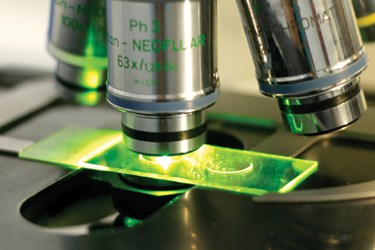Nanoparticles Zero In On Cancer With Triple Chemo Drugs

Chemists from the Massachusetts Institute of Technology have found a new way to build nanoparticles designed to deliver chemotherapy drugs directly to tumors and cancer.
Previous efforts have enabled the development of nanoparticles that can carry one or two chemotherapy drugs on target, but no more than that in a precise ratio. The researchers were able to design the particles to carry the triple-threat cancer drugs cisplatin, doxorubicin, and camptothecin in specific ratio that matches the maximum tolerated dose of each drug. Each anti-cancer drug has its own release mechanism. “We think it’s the first example of a nanoparticle that carries a precise ratio of three drugs and can release those drugs in response to three distinct triggering mechanisms,” said Jeremiah Johnson, an assistant professor of chemistry at MIT and the senior author of the new paper.
Such nanoparticles could be designed to carry even more drugs. This will allow development of new treatment regimes that could destroy cancer cells while avoiding usual side effects of traditional chemotherapy. Johnson and colleagues’ research shows that triple-threat nanoparticles were able to kill ovarian cancer cells more effectively than those loaded with only one or two drugs. The researchers have begun testing the nanoparticles against tumors in animal models.
“It’s important to be able to rapidly and efficiently make particles with different ratios of multiple drugs, so that you can test them for their activity. We can’t just make one particle, we need to be able to make different ratios, which our method can easily do,” said Professor Johnson. The team is now working on developing nanoparticles that can carry four drugs on target tumors and cancer cells. The researchers also plan to tag the particles with molecules that will help them to hone in on tumor cells by interacting with proteins found on cell surfaces.
Data from the MIT chemists’ research were published in the Journal of the American Chemical Society.
